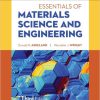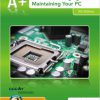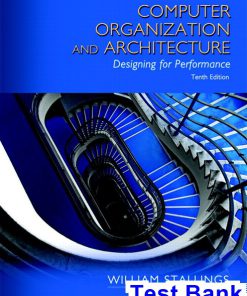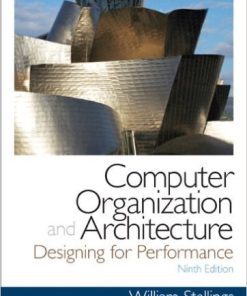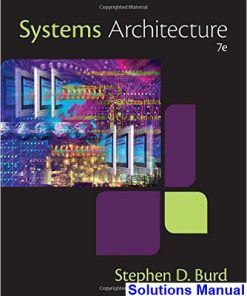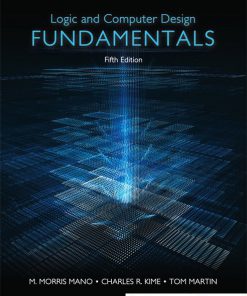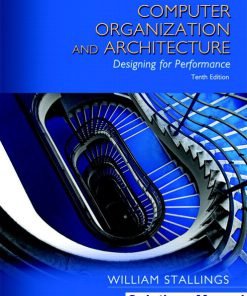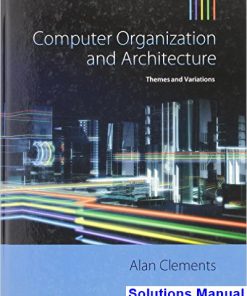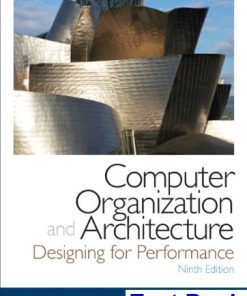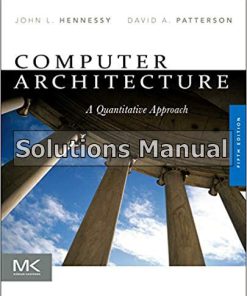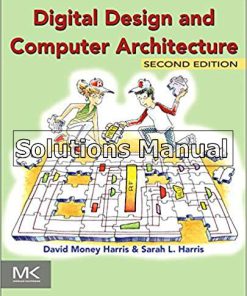Computer Systems Design and Architecture 2nd Edition Heuring Solutions Manual
$50.00 Original price was: $50.00.$26.50Current price is: $26.50.
Computer Systems Design and Architecture 2nd Edition Heuring Solutions Manual.
Instant download Computer Systems Design and Architecture 2nd Edition Heuring Solutions Manual pdf docx epub after payment.
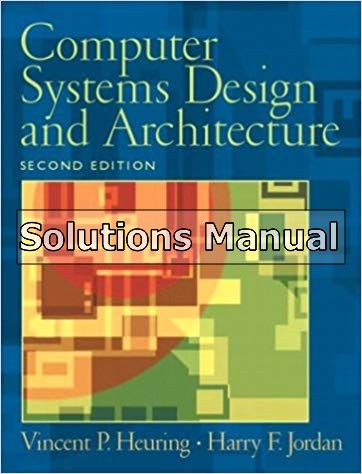
Product Details:
- ISBN-10 : 0130484407
- ISBN-13 : 978-0130484406
- Author: Vincent P. Heuring, Harry F. Jordan
The authors take a “No Mysteries” approach to computer systems. They interrelate three different viewpoints to provide a unique understanding of the subject: the perspective of the logic designer, the assembly language programmer, and the computer architect. The book has up-to-the-minute coverage of the latest developments in microprocessors, including ALU, pipelining, memory hierarchy, networks and the Internet. And, rather than focusing on a single type of architecture, Heuring and Jordan examine both CISC and RISC models at the ISA level using the unambiguous language of RTN (Register Transfer Notation), allowing for a more in-depth appreciation of different machine structures and functions.
Table of contents:
1. The General Purpose Machine.
The General Purpose Machine. The User’s View. The Machine/Assembly Language Programmer’s View. The Computer Architect’s View. The Computer System Logic Designer’s View. Historical Perspective. Trends and Research. Approach of the Text.
2. Machines, Machine Languages, and Digital Logic.
Classification of Computers and Their Instructions. Computer Instruction Sets. Informal Description of the Simple RISC Computer, SRC. Formal Description of SRC Using Register Transfer Notation, RTN. Describing Addressing Modes with RTN. Register Transfers and Logic Circuits: From Behavior to Hardware.
3. Some Real Machines.
Machine Characteristics and Performance. RISC versus CISC. A CISC Microprocessor: the Motorola MC68000. A RISC Architecture: The SPARC.
4. Processor Design.
The Design Process. A 1-Bus Microarchitecture for the SRC. Data Path Implementation. Logic Design for the 1-Bus SRC. The Control Unit. 2- And 3-Bus Processor Designs. The Machine Reset. Machine Exceptions.
5. Processor Design-Advanced Topics.
Pipelining. Instruction-Level Parallelism. Microprogramming.
6. Computer Arithmetic and the Arithmetic Unit.
Number Systems and Radix Conversion. Fixed Point Arithmetic. Semi-Numeric Aspects of ALU Design. Floating Point Arithmetic.
7. Memory System Design.
Introduction: The Components of the Memory System. RAM Structure: The Logic Designer’s Perspective. Memory Boards and Modules. Two Level Memory Hierarchy. The Cache. Virtual Memory. The Memory Subsystem In the Computer.
8. Input and Output.
The I/O Subsystem. Programmed I/O. I/O Interrupts. Direct Memory Access (DMA). I/O Data Format Change and Error Control.
9. Peripheral Devices.
Magnetic Disk Drives. Improving Disk Drive Performance and Reliability. Other Mass Storage Devices. Display Devices. Printers. Input Devices. Interfacing to the Analog World.
10. Communications, Networking and the Internet.
Computer to Computer Data Communications. Serial Data Communications Protocols. Local Area Networks. Modern Serial Buses: USB and Firewire. The Internet.
Appendix A: Digital Logic.
Appendix B: RTN Description of SRC.
Appendix C: Assembly and Assemblers.
Appendix D: Tutorial on Machine Representations and Arithmetic.
People Also Search:
computer architecture and design embedded systems
system design vs architecture
what is computer system architecture
system design vs architecture design
what is system architecture design
what is computer design in computer architecture
basic computer architecture diagram
difference between computer design and computer architecture
general computer systems
quantitative computer architecture
4 layers of computer system
Instant download after Payment is complete
You may also like…
Information Technology
Computer Organization and Architecture 10th Edition Stallings Test Bank
Information Technology
Computer Organization and Architecture 9th Edition William Stallings Solutions Manual
Information Technology
Information Technology
Logic and Computer Design Fundamentals 5th Edition Mano Solutions Manual
Information Technology
Computer Organization and Architecture 10th Edition Stallings Solutions Manual
Information Technology
Information Technology
Computer Organization and Architecture 9th Edition William Stallings Test Bank
Solutions Manual
Computer Architecture A Quantitative Approach 5th Edition Hennessy Solutions Manual
Related products
Solutions Manual
Accounting Volume 2 Canadian 8th Edition Horngren Solutions Manual
Solutions Manual
Solutions Manual
Solutions Manual
Accounting Volume 1 Canadian 8th Edition Horngren Solutions Manual
Solutions Manual
Solutions Manual


